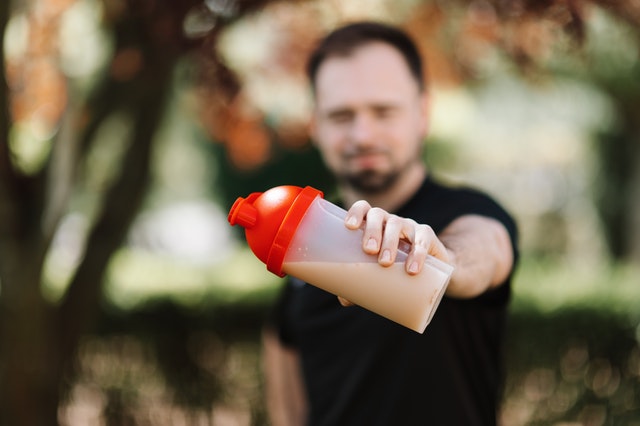
Weight Loss With Protein Shakes as a Meal Replacement: Are They The Same?
Despite the fact that consumers frequently confuse protein shakes and meal replacements, they are two distinct product categories. Weight loss and improving athletic performance are not the same thing, which is critical given that obesity is on the rise.
Not one country has seen a decrease in obesity rates over the previous two and a half decades, according to the Global Burden of Disease Study Obesity has nearly tripled in the last four decades. One word describes this epidemic: pandemic.
We gain weight because of an imbalance between calories consumed and calories expended, and because of the decline in physical activity that comes with our increasingly sedentary urban lifestyles.
Create opportunities for healthy eating and physical activity would therefore be an intelligent strategy. In contrast, people frequently struggle with making nutritious food choices.
This might be because:
Not able to find the time to prepare nutritious meals.
Eating out.
Increased portions sizes during meals and snacks.
It’s easy to find, convenient, and tasty to eat foods that are high in energy but low in nutrients.
The use of meal replacements as a weight-loss strategy may be appropriate in this case.
Do You Mean a Meal Substitute in a Technical Sense?
In order to sort through the confusion, meal replacement shakes, smoothies, and juicing are not the same thing as meal replacement shakes. Meal replacements, on the other hand, are low-calorie foods that take the place of regular meals in terms of nutritional value.
These foods, which are high in protein as well as other nutrients, are popular for helping people slim down or keep it off. Depending on the program, they could be used for one or two of the typical three daily meals.
The sole purpose of a protein shake is to deliver protein; it is not meant to be a meal replacement. It can be used as a dietary supplement, not a replacement for food.
Replace meals with bars, shakes, powders that can be mixed with milk, or any other ready-to-eat or easy-to-prepare food. The calories in smoothies, for example, can be used to replace unhealthy meals like fried foods and fast food.
It’s important to realize that you cannot replace a well balanced, healthy meal. There is no replacement for whole foods, vegetables, and fruits.
Meal replacement shakes that are 200 or 300 calories in size contain all of the macro- and micronutrients found in a 500 to 800-calorie meal, rather than just providing protein.
In Addition to These Ingredients, Meal Replacements Contain
The American Academy of Nutrition and Dietetics agree that meal replacement shakes are an effective weight loss strategy that has been studied for more than a decade.
Meal replacements can help people lose weight when on an energy-restricted diet by replacing two of the main daily meals. By replacing one of their main daily meals with such products, people who have lost weight can keep it off.
Depending on the product, protein accounts for anywhere from 25% to 50% of its total energy.
Fat makes up around 30% of the total energy content of the product. Vitamins and minerals account for about 30% of the nutrient reference value requirements.
Understanding Meal Replacements’ Protein and Fiber Content
Soy or whey protein is a common ingredient in meal replacement shakes. Some products contain a significant amount of dietary fiber. These two things go hand in hand for a reason: they both help you manage your hunger and appetite.
Hunger and appetite are often used as synonyms, but they refer to two different things. When someone feels hungry, their body tells them to eat, but when they want to eat, it’s called appetite. Having the urge to eat can happen even if you’re not hungry. Other than physiological factors, appetite can be influenced. Exposure to food, whether by sight, smell, or taste, for example, can spur hunger.
Plant-based protein and fiber both aid in fullness, but how?
Protein
Protein is more likely than other nutrients to make you feel satisfied after a meal. Unlike carbohydrates, protein takes longer to digest, so it stays in the intestines longer after consumption. Plant and animal proteins both curb hunger in the same way.
Soy-based proteins contain fiber in addition to protein.
Fiber
It takes longer for food to move through the digestive system when you consume a lot of fiber. Because glucose absorption into your bloodstream is slowed, you’ll feel fuller for longer.
By stimulating stomach receptors that alert your brain when you’ve had enough to eat, fiber helps you feel fuller for longer.
Drinking a lot of water will help your digestive system move fiber along more quickly. Because hunger and thirst are often mistaken for one another, this helps in the fight against hunger.
As a result, a lot of people confuse meal replacement supplements with protein shakes. That isn’t true, as you will see.
What’s the Difference Between Protein Shakes and Meal Replacements?
The nutritional profiles of meal replacements and protein products differ and they are designed to serve different purposes. Meal replacements help you lose weight, while protein drinks help you get better at sports and bulk up.
If you think a meal replacement shake is the same as a protein shake, you could undo all your weight loss progress.
It’s up to you as the buyer to weigh the benefits and drawbacks of both options. Protein shakes can be used to fuel your workouts as well as to build muscle mass, tighten your body, and repair any damage your muscles have suffered during your workout. However, switching to a weight loss or weight maintenance meal replacement shake can help.

© All Rights Reserved 2020-2021





